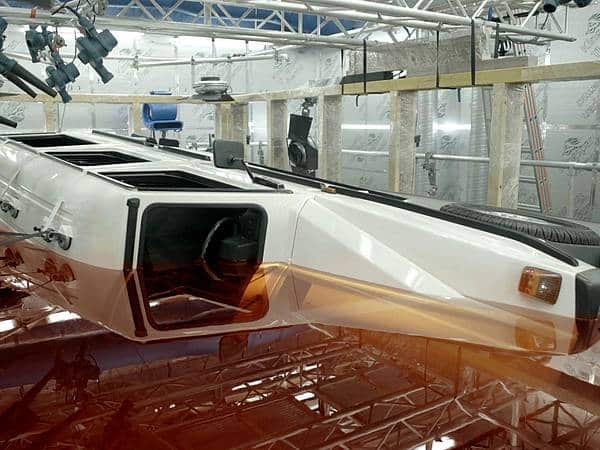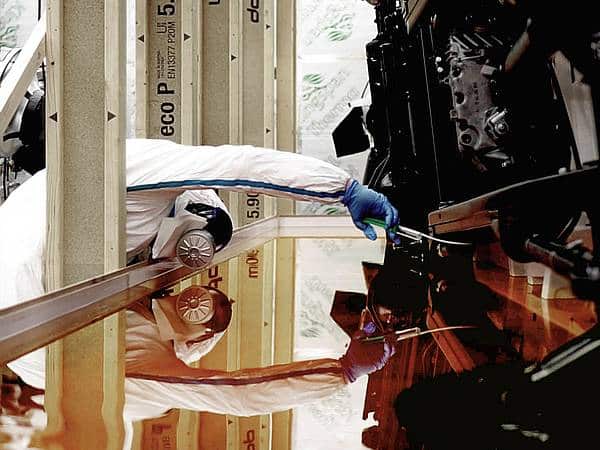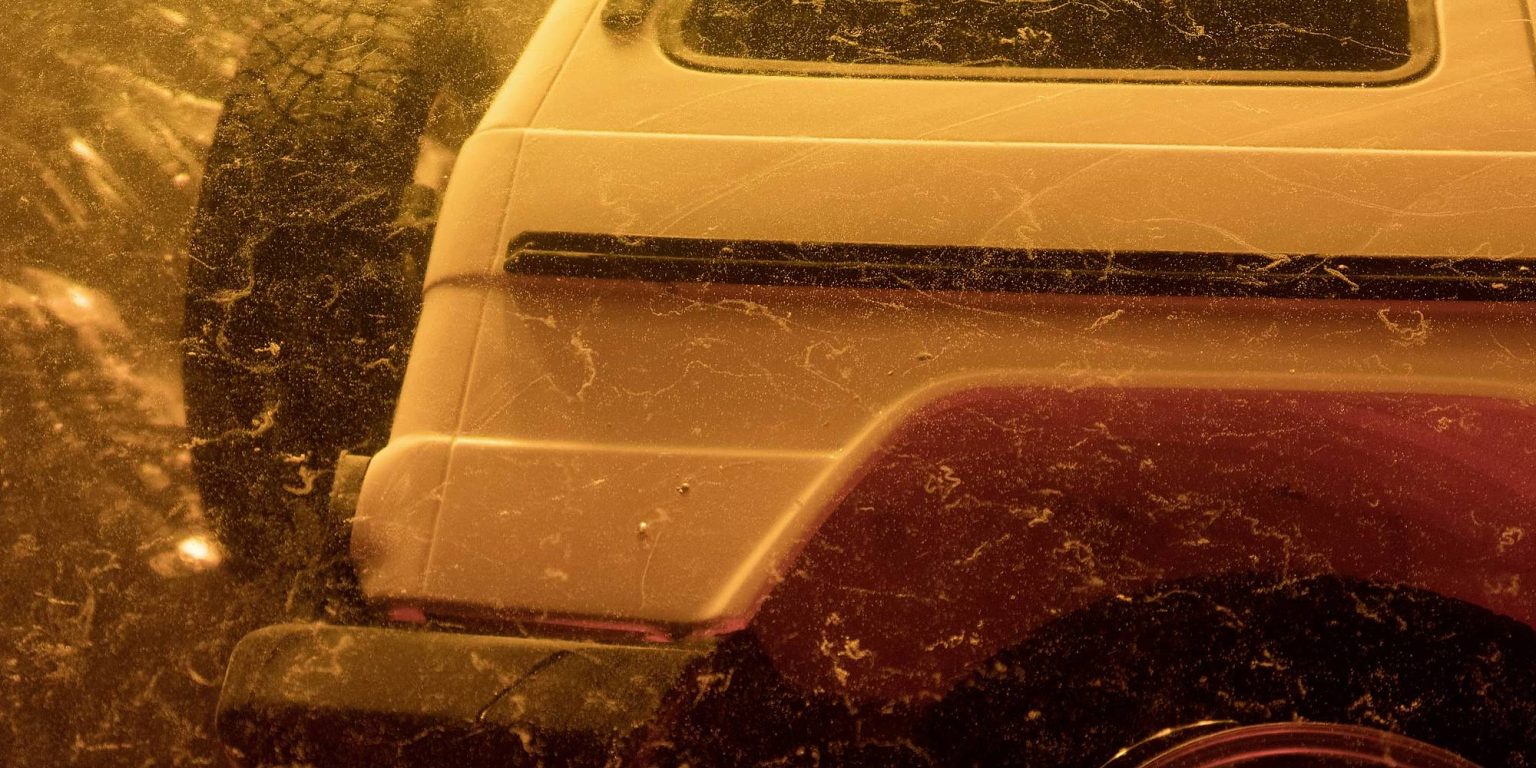
Stories
Sealed in amber
For the presentation of the new G-class, Mercedes Benz has sealed a model from 1979 in a gigantic block of synthetic resin. This record-breaking project was made possible by a RECKLI product.

Amidst the icy cold of Detroit, even time seemed to be frozen at the North American International Auto Show (NAIAS) in February 2018: a Mercedes G-class from the series built in 1979, sealed in a gigantic block of synthetic resin, welcomed the visitors outside the doors of the hall. The G-class seemed to be preserved right in its element, on a downhill stretch of road – like an insect trapped in amber. But instead of a single drop of amber, it took 44.4 metric tons of liquid synthetic resin to preserve the G-class for eternity. The largest synthetic resin casting in the world captivated visitors to the car show.
The Amber Cube is deliberately designed to mimic the phenomenon of insects preserved in amber. The latest G-class model is bringing the characteristics of the longest-running car series from Mercedes-Benz into the modern world: iconic design, superior handling off-road, driving comfort on the road. »For almost 40 years, our cult off-road vehicle has been developing continuously – without changing its character or its core values. Its DNA is stronger than time or any passing trends. This is expressively communicated by the cube, thus embodying the objectives for the ongoing development of the G-class,« said Dr. Gunnar Güthenke, Head of the Off-Road product division at Mercedes-Benz.
The Berlin-based agency Antoni developed this self-image into the idea for the »stronger than time« campaign with the G-class sealed in a block of synthetic amber. But how do you preserve a car? The German Association for Materials Research and Testing had the answer: a two-component synthetic resin with minimal shrinkage behavior would encapsulate the car without causing deformations. In order to fully encapsulate the G-class, which is roughly 16 feet long, 6 feet wide and 6 feet high, immense quantities of liquid resin would be needed: RECKLI supplied more than 52 giant metal cans of the material for this gargantuan task – the largest quantity ever ordered for a single project.

»We have to do it,« was the first thought of Andreas Kleinmann from the Hamburg-based advertising film production company Markenfilm. The enthusiasm for this unique project outweighed the skepticism over how it was to be achieved. Kleinmann and his team seized the challenge: under his supervision, the resin cube took shape in a laboratory near Hamburg. This required the team to first conduct a series of tests with the synthetic resin, in order to closely study its properties. When mixed together, the two components of the resin react with one another, generating warmth.

»Each stage of casting was a new thriller,« says Kleinmann. »The bigger the test objects were – seats, dashboard instruments, vehicle doors – the more we had to fight to keep the exothermic reaction under control.« From the tests, the team determined the casting speed and the thickness of the individual layers: just over an inch per layer.

There was also no getting around the need for a special working environment. »In the end, we had a cleanroom whose atmosphere was completely isolated from the outside world,« says Kleinmann. This required dehumidification, air-conditioning systems, ventilation, and continuous temperature monitoring of the entire cast mass, in every corner of the vehicle. The team of 39 workers only entered the working environment with protective suits and masks, in order to avoid bringing in dust particles, and to protect them from the resin vapors.
The G-class was also not allowed to contain any dirt before the casting process. It was dismantled into virtually all of its component parts, and comprehensively cleaned, in order to avoid any uncontrolled reactions with the resin. After the engine had been ice-blasted, the vehicle was reassembled and positioned on its side, ready to be encapsulated. The resin cube took shape in 90 casting layers. Every 24 hours, the cube grew by the addition of another inch-thick layer. These layers weighed 550 kilograms (1210 lbs) each, and had to be poured within fifteen minutes, and without producing any bubbles. One of the team’s main tasks was to remove bubbles that formed on seat cushions, on the underbody, on the carpet, or for example on the inside of the doors. At the same time, the technicians had to ensure absolutely consistent climate control. »After the actual reaction had taken place, the material always had to be cooled back to its optimal initial temperature. Then the next layer could be prepared,« explains Kleinmann. With each layer, the formwork also grew taller, board-by-board. The cube had been produced slightly larger than needed, and after the removal of the formwork, it was cut to its final dimensions using a diamond rope saw, and finally polished.

After a total of 8892 man-hours, it was complete: the G-class was encased in a resin cube measuring roughly 10 feet by 8 feet by 18 feet. Then the task was to maneuver the cube out of the lab and send it on a world trip: from its starting point in Hamburg, the 52-ton Amber Cube was shipped via Southampton to the American port of Baltimore, and transported from there to Detroit. But Detroit is not the end of the line for the cube: it will continue on its journey, and finally find a permanent home – where exactly is still a secret.




